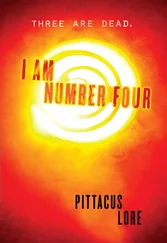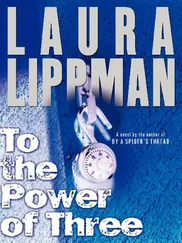That first day we had sat and talked long enough for him to finish one bottle of wine and order a second.
“You stick with Hector Ricardo,” he’d said when I had to get back to the convent. “I’ll take care of you; it’s in my name. The Latin root of Hector means ‘to defend and hold fast.’ And Ricardo means ‘power and bravery,’” he’d said, thumping his chest twice with his right fist. “Hector Ricardo will take care of you!”
I could tell he meant it.
He’d gone on. “Marina. ‘Of the sea.’ That’s what your name means; did you know that?”
I’d told him I did not. I’d wondered what Birgitta meant. And Yasmin. What Emmalina was rooted in.
“That means you are Santa Teresa’s own Sea Queen,” he’d said with a sideways grin.
I’d laughed at him. “I think you’ve been drinking too much, Hector Ricardo.”
“Yes,” he’d replied. “I am the town drunk, dear Marina. But don’t let that fool you. Hector Ricardo is a defender all the same. And besides, show me a man without vice and I’ll show you one without virtue!”
Years later, he’s one of the few people I can call a friend.
It takes twenty-five minutes for the few hundred people to receive their due today; and after the last person leaves the line, it’s our turn to eat, sitting away from the others. As a group we eat as fast as we can, knowing that the quicker we clean up and get everything put away, the sooner we’ll be on our own.
Fifteen minutes later the five of us who work the line are scraping pots and pans and wiping counters. At its best, cleanup takes an hour, and that’s only if everyone leaves the cafeteria after they’re done eating, which rarely happens. As we’re cleaning, when I know the others aren’t looking, I throw into a bag the nonperishable items I plan to take to the cave today: dried fruits and berries, nuts, a can of tuna fish, a can of beans. This has become another weekly tradition of mine. For a long time I convinced myself I was doing it so I could snack when painting the cave’s walls. But the truth is I’m creating a stockpile of food in case the worst arrives and I have to hide. And by the worst, I mean them .
WHEN I FINALLY WALK OUTSIDE AFTER CHANGING into warmer clothes and rolling my bed blanket under my arm, the sun is shifted to the west and there’s not a cloud in the sky. It’s half past four, which gives me an hour and a half at best. I hate the rushed quality of Sundays, the way the day creeps by until the very moment we’re free, at which point time flies. I look to the east, and the light reflected off the snow causes me to squint. The cave is over two rocky hills. With as much snow as there is on the ground now, I’m not even sure I’ll see the opening today. But I pull on my hat, zip up my jacket, tie the blanket around my neck like a cape, and head east.
Two tall birch trees mark the trail’s start, and my feet turn cold the second I enter the deep drifts. The blanket-cape sweeps the snow behind me, erasing my footprints. I pass a few recognizable fixtures that show the way-a rock jutting out past the others, a tree that leans at a slightly different angle. After about twenty minutes I pass the rock formation identical to a camel’s back, which tells me I’m almost there.
I have the faint sensation of being watched, possibly followed. I turn and scan the mountainside. Silence. Snow, nothing else. The blanket around my neck has done a great job of hiding my tracks. A slow, prickly feeling crawls up the back of my neck. I’ve seen the way rabbits blend into the landscape, going unnoticed until you’re almost on top of them, and I know that just because I can’t see somebody doesn’t mean they can’t see me.
Five minutes later I finally spot the rounded shrub that blocks the entrance. The cave’s mouth looks like an oversized groundhog hole cutting into the mountain, and that’s exactly what I had mistaken it for years ago. But when I’d looked more closely I knew I was wrong. The cave was deep and dark, and back then I could see next to nothing in the little light that entered. There was an implicit desire to discover the cave’s secrets, and I wonder if this is what caused the Legacy to develop: my ability to see in the dark. I can’t see in the dark as easily as I can in the day, but even the deepest recesses of black glow as though lit by candlelight.
On my knees, I knock away just enough snow to be able to slip down and in. I drop the bag ahead of me, untie the blanket from my neck and sweep it across the snow to hide my footprints, then hang it on the other side of the opening to keep out the wind. The entrance is narrow for the first three meters, followed by a slightly wider passageway that winds down a steep decline large enough to navigate while standing; and after that the cave opens, revealing itself.
The ceiling is high and echoing, and its five walls smoothly transition into one another, creating an almost perfect polygon. A stream cuts through the back right corner. I have no idea where the water comes from or where it goes-springing up through one of the walls only to disappear into the earth’s deeper depths-but the level never changes, offering a reservoir of icy cold water regardless of the time of day or season. With the constant fresh source of water, this is the perfect place to hide. From the Mogadorians, the Sisters, and the girls-even Adelina. It’s also the perfect place to use and hone my Legacies.
I drop the bag beside the stream, remove the nonperishables, and place them on the rock ledge, which already holds several chocolate bars, small bags of granola, oatmeal, cereal, powdered milk, a jar of peanut butter, and various cans of fruits, vegetables, and soup. Enough for weeks. Only when everything is put away do I stand and allow myself to be greeted by the landscapes and faces I’ve painted on the walls.
From the very first time a brush was put into my hand at school, I fell in love with painting. Painting allows me to see things as I want to and not necessarily as they are; it’s an escape, a way to preserve thoughts and memories, a way to create hopes and dreams.
I rinse the brushes, rubbing the stiffness from the bristles, and then mix the paint with water and sediment from the creek bed, creating earthy tones that match the gray of the cave’s walls. Then I walk to where John Smith’s partially completed face greets me with his uncertain grin.
I spend a lot of time on his dark blue eyes, trying to get them just right. There’s a certain glint that’s hard to replicate; and when I tire of trying, I start on a new painting, that of the girl with the raven hair I had dreamed about. Unlike John’s eyes, I have no trouble at all with hers, letting the gray wall do its magic; and I think that if I were to wave a lighted candle in front of it, the color would slightly change, as I’m sure her eyes do depending on her mood and the light around her. It’s just a feeling I get. The other faces I’ve painted are Hector’s, Adelina’s, a few of the town’s vendors I see every weekday. Because this cave is so deep and dark, I believe my paintings are safe from anyone’s eyes but mine. It’s still a risk, I know, but I just can’t help myself.
After a while I go up and push aside my blanket, poking my head out of the cave. I see nothing but drifts of white and the bottom of the sun kissing the horizon line-which tells me it’s time to go. I haven’t painted nearly as much or as long as I would have liked. Before cleaning the brushes I walk to the wall opposite John and look at the big red square I’ve painted there. Before it was a red square I’d done something foolish, something I know would have exposed me as a Garde, and painted a list.
I touch the square and think of the first three numbers that are underneath, running my fingertips over the dried, cracked paint, deeply saddened by what those lines meant. If there is any consolation in their deaths, it’s that they can now rest easy and no longer have to live in fear.
Читать дальше












